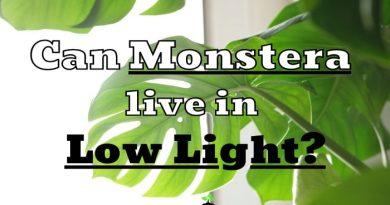Can Jasmine Grow in Shade? Answer May Surprise You!
Are you curious about whether jasmine plants can thrive in shade? You’ve come to the right place! In this blog post, we’ll explore the world of jasmine plants and discuss their ability to grow in various lighting conditions, including shade.
Yes, Jasmine can grow in shade, but it prefers a warm, sheltered location. Varieties like Confederate and Italian jasmine can thrive in partial shade with rich, organic soil, compost, proper pruning and fertilizing, and consistent moisture. Varieties such as Winter and Carolina jasmine tolerate dappled shade or filtered light. Most jasmine needs 4+ hours of direct sun, but these shade-tolerant types can still flower beautifully in light or dappled shade with their care needs met.
Table with best jasmine varieties for shade
| Jasmine Variety | Shade Tolerance | Light Requirements (Lux) |
|---|---|---|
| Winter Jasmine | Highly shade tolerant | 2000-3000 |
| Confederate Jasmine | Shade tolerant | 1000-2000 |
| Carolina Jasmine | Low shade tolerance | 3000-4000 |
| Italian Jasmine | Shade tolerant | 1000-2000 |
| Star Jasmine | Low shade tolerance | 4000-5000 |
| Common Jasmine | Low shade tolerance | 2000-4000 |
| Arabian Jasmine | Low shade tolerance | 4000-5000 |
How to Grow Jasmine in the Shade
Here are the steps I take to successfully grow jasmine in the shade:
- I start by selecting varieties known to thrive with less sunlight like Confederate jasmine or Italian jasmine. I prepare the planting area by amending the soil with compost to improve drainage and nutrient retention.
- I dig a hole slightly larger than the root ball of the jasmine plant. Add well-rotted manure or compost to the bottom of the hole. On heavy soils, add grit to aid drainage.
- Next, I plant the jasmine in spring or fall when temperatures are milder. I space plants 2-3 feet apart and water them in well. Throughout the growing season, I water deeply 1-2 times per week only when the top few inches of soil are dry.
- Fertilizing monthly during warmer months provides the extra nutrients jasmine needs to flower with less light. I use a balanced organic fertilizer and follow label instructions. Proper nutrition helps jasmine leaf out and bloom even with dappled shade.
- Pruning after flowering in winter opens the plant up for better air circulation too. Come spring, I watch newly emerging leaves for signs of deficiencies and supplement accordingly based on tests.
However, there are several factors to consider to ensure the healthy growth of your jasmine plant in shady conditions.
Factors Affecting Jasmine’s Ability to Grow in Shade
Various factors influence the growth of jasmine plants in shady conditions. Understanding these factors can help you create the ideal environment for your jasmine plant to flourish even in less sunny spots in your garden.
Variety of Jasmine Plants
Different varieties of jasmine have varying light requirements. Some types of jasmine can tolerate shade better than others.
For example, Jasminum polyanthum (winter jasmine) and Jasminum officinale (common jasmine) can handle partial shade. Be sure to choose a jasmine plant that suits your garden’s lighting conditions.
Light Intensity and Duration
The amount of shade your jasmine receives will impact its growth. Partial shade, where the plant receives some sunlight during the day, is generally better than deep shade, where it gets no direct sun at all. Jasmine plants need at least a few hours of sunlight each day to grow and bloom properly.
| Sunlight Conditions | Day (Hours) | Night (Hours) |
|---|---|---|
| Full Sun | 6-8 | 0 |
| Partial Sun | 4-6 | 0 |
| Partial Shade | 2-4 | 0-2 |
| Bright Indirect Light | 0-2 | 8-10 |
| Low Light | 0-2 | 10-12 |
Sources: https://edis.ifas.ufl.edu/publication/EP362
Soil Quality
The type of soil in your garden plays a crucial role in the growth of jasmine plants in the shade. Well-draining soil rich in organic matter ensures the plant has access to essential nutrients.
Adding compost or other organic materials can improve soil quality, promoting better growth even in shady conditions.
Temperature and Humidity
Temperature and humidity are important factors that can influence the growth of jasmine plants in the shade. Jasmine plants generally prefer warmer temperatures and moderate to high humidity levels. In cooler or drier climates, you may need to provide additional warmth and moisture to help your jasmine plant thrive in the shade.
Air Circulation
Proper air circulation is essential for the healthy growth of jasmine plants, particularly in shady conditions. Good airflow helps prevent the buildup of moisture on the plant’s leaves, which can lead to fungal infections and other diseases.
Make sure your jasmine plant has enough space around it for air to circulate freely.
Advantages and Drawbacks of Growing Jasmine in Shade
Growing jasmine in shade has both pros and cons that can affect the plant’s overall health and appearance. Knowing the advantages and drawbacks of growing jasmine in shady conditions will help you make informed decisions on the best care practices for your jasmine plant.
Advantages of Growing Jasmine in Shade
- Protection from harsh sunlight: Shade can protect jasmine plants from strong afternoon sunlight, which might cause leaf scorch in some varieties.
- Controlled growth: Growing jasmine in shade can make it easier to manage its growth, as it may not grow as vigorously as it would in full sun.
- Cooler temperatures: Shady conditions can help keep the soil and surrounding area cooler, reducing the risk of heat stress for jasmine plants.
- Reduced water evaporation: Shaded areas often have lower evaporation rates, which means the soil stays moist longer, requiring less frequent watering.
Drawbacks of Growing Jasmine in Shade
- Fewer flowers: Jasmine plants grown in the shade might produce fewer flowers compared to those grown in full sunlight.
- Smaller blooms: The flowers produced by jasmine plants in shade may be smaller than those grown in full sun.
- Increased susceptibility to pests and diseases: A lack of sunlight might make jasmine plants more vulnerable to pests and diseases, such as aphids, spider mites, and fungal infections.
- Slower growth rate: Jasmine plants grown in the shade might have a slower growth rate than those grown in sunnier conditions, which can affect the overall appearance and size of the plant.
By considering these advantages and drawbacks, you can make a more informed decision about whether growing jasmine in shade is the right choice for your garden, and provide the necessary care to ensure a healthy, thriving plant.
Can Jasmine Grow in Indirect Sunlight?
Yes, jasmine can grow in indirect sunlight, and in some cases, it may even be ideal. Indirect sunlight is when the light is diffused or filtered, such as through a curtain or beneath a tree canopy.
This can provide the jasmine plant with enough light for photosynthesis and growth without the risk of sunburn or overheating.
Just be sure the plant is still receiving several hours of light each day, as too little sunlight can hinder its growth and flowering.
Tips for Growing Jasmine in Shade
- Choose a shade-tolerant variety.
- Ensure the plant receives at least a few hours of sunlight daily.
- Consider using a grow light to supplement natural light.
- Monitor the plant’s growth and adjust its location if necessary.
Conclusion
By taking these factors and tips into account, you can successfully grow jasmine plants in the shade. With a little attention and care, your shady garden can be filled with the delightful fragrance and beautiful blooms of jasmine.
Just remember to keep an eye on your plant’s growth and make adjustments as needed to ensure a healthy, thriving jasmine plant.
Frequently Asked Questions
Yes, some varieties of jasmine can grow in low light. In fact, many jasmine varieties have a high shade tolerance and can grow well in partial to full shade conditions. Some examples of jasmine varieties that can grow in low light include Trachelospermum asiaticum, Trachelospermum jasminoides “Madison,” Jasminum mesnyi, and Jasminum polyanthum.
If you want to grow jasmine in shade, you can provide shade by planting it in an area with overhead shade, such as under a tree or on a shaded porch. You can also use shade cloth or other materials to provide partial shade if necessary.
Yes, jasmine plants grown in shade can still produce flowers, but they may produce fewer flowers and grow more slowly than those grown in full sun. If you want your jasmine plant to produce as many flowers as possible, it’s best to provide it with as much sunlight as possible while still protecting it from extreme heat or cold.
Star jasmine (Trachelospermum jasminoides) can tolerate some shade but prefers a location that receives full sun for at least 6 hours per day. It will grow in partial shade but will not flower as profusely or be as vigorous.




